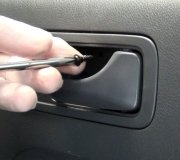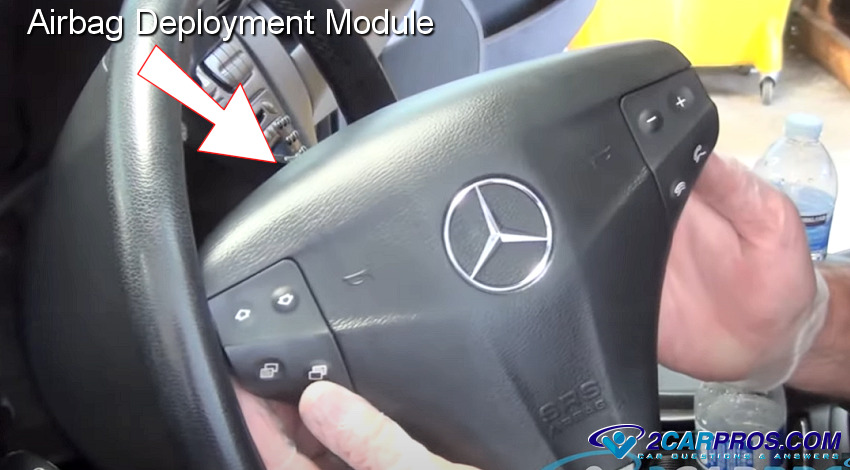You never asked anything about a vacuum leak. A small one won't affect the cruise control. A larger leak will cause running problems before or in addition to a cruise control problem. Even then, unstable vacuum typically will cause difficulty in resuming to a previously-set speed, an inability to maintain the speed on an incline, or in some cases, fluctuating speed.
To set your fears to rest about air bags, you have to work pretty hard to set one off, and there's little chance you'll do that accidentally. The capacitors you're referring to hold a charge for about two minutes after the ignition switch is turned off. All disconnecting the battery accomplishes is it erases any diagnostic fault codes, (of which there aren't any if the warning light wasn't on), and it prevents the system from initializing if you turn the ignition switch back on.
Every air bag has a two-terminal connector with gold-plated pins and a shorting bar that connects those two pins together as soon as the connector is removed. That is so you can't generate any static electricity that could set the bag off. As long as no one purposely damaged that shorting bar, static electricity won't set the bag off. You can just unplug the bag and set it off to the side.
The same is true of all the connectors in the "initiator" wire running between the air bag assembly and the computer. They all have the same shorting bars on the air bag sides of the connectors. That way no matter where you disconnect something, static electricity won't affect it. By the way, for demonstration purposes, we set them off with a nine volt transistor battery and a disabled shorting bar. When you walk across the carpeted floor, then see and feel a shock when you touch a door knob, to feel it requires at least 3000 volts. That's why they're worried about static electricity.
I should point out too, that if the ribbon cable in the clock spring breaks for the initiator circuit, there will not be anything shorting the two wires together, and static electricity could light off the bag. I've seen two vehicles where the owners ignored the warning lights for so long, the cables unraveled and actually peeked out under the steering wheel. Now you really have a hazard. Most of the clock springs are totally enclosed, but in these cases the housings had been damaged from previous crashes and someone reused them. Normally the ribbon cables are still okay, but the assembly is supposed to be replaced, (among many other parts that appear to be okay), because the connectors are melted from the burning fuel.
I'm going to share something too, but be careful how you use this information. Almost every job in the service manual starts with "disconnect the battery, ...). That is for liability purposes so when someone injures them self, they can't sue the manufacturer because they didn't "follow procedures". We joke that we're supposed to disconnect the battery to replace a wiper blade or empty the ash tray. If you use common sense with a little knowledge, there is nothing to fear about air bags. As proof, when is the last time you heard on the news about someone being hurt when working on one? So may people hated them when they first came out, and if one accidentally went off, some people would scream and point and say, "I told you so". Hasn't happened.
The only exception to this is the air bags used for two years on Jeeps in the mid '90s. They were 100 percent mechanical, extremely effective, and absolutely no electronics whatsoever. They used a spring-loaded ball to fire the rocket fuel, and you could set them off by dropping the assembly the floor. There was nothing to monitor, but the politicians who know nothing about cars, made them switch to the more complicated computer-controlled system so there could be an "Air Bag" light on the dash. If you ever pull one of those off, and you find no wires or anything attached to it, be careful to not drop it.
Wednesday, September 10th, 2014 AT 7:53 PM


